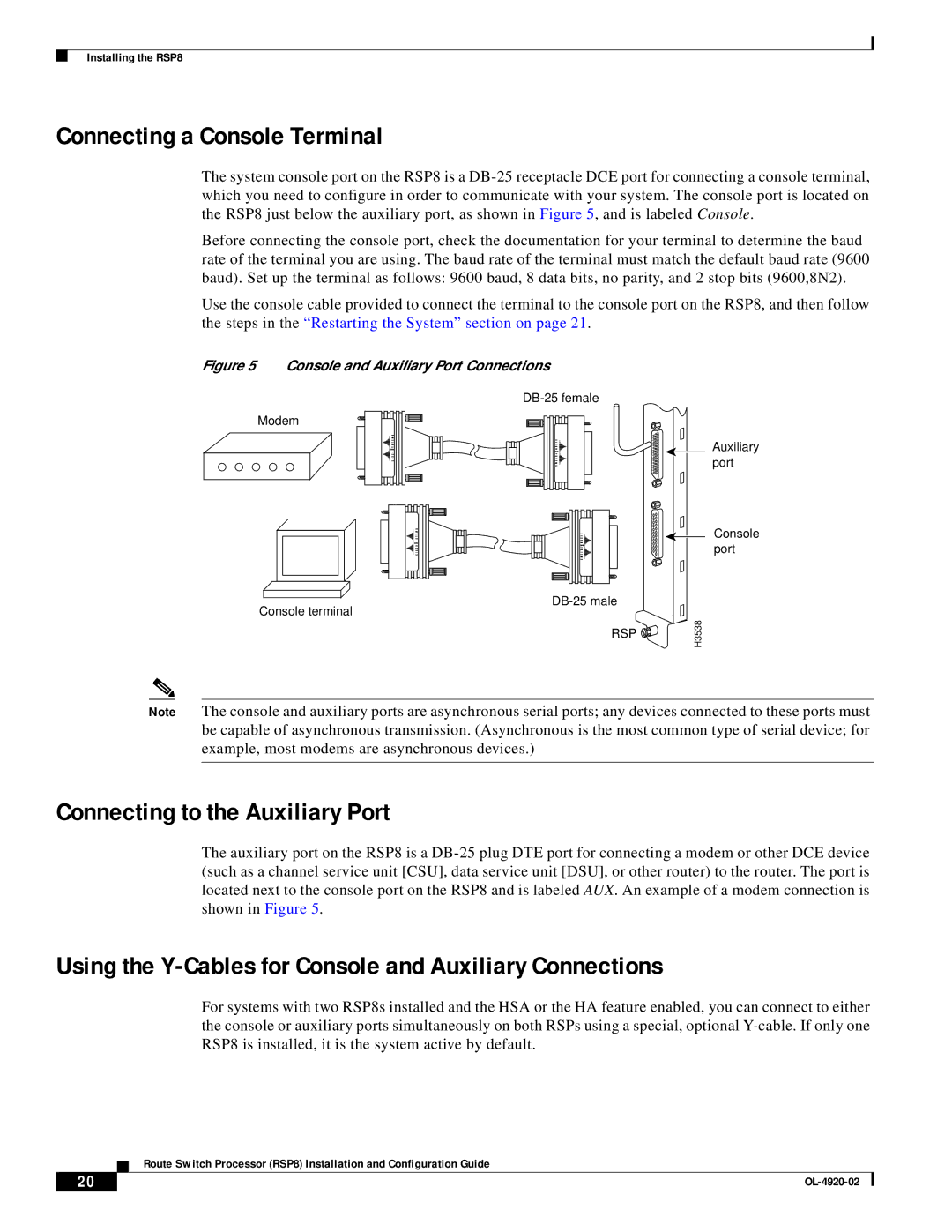
Installing the RSP8
Connecting a Console Terminal
The system console port on the RSP8 is a
Before connecting the console port, check the documentation for your terminal to determine the baud rate of the terminal you are using. The baud rate of the terminal must match the default baud rate (9600 baud). Set up the terminal as follows: 9600 baud, 8 data bits, no parity, and 2 stop bits (9600,8N2).
Use the console cable provided to connect the terminal to the console port on the RSP8, and then follow the steps in the “Restarting the System” section on page 21 .
Figure 5 Console and Auxiliary Port Connections
Modem
Console terminal
RSP ![]()
![]()
Auxiliary port
Console port
H3538
Note The console and auxiliary ports are asynchronous serial ports; any devices connected to these ports must be capable of asynchronous transmission. (Asynchronous is the most common type of serial device; for example, most modems are asynchronous devices.)
Connecting to the Auxiliary Port
The auxiliary port on the RSP8 is a
Using the Y-Cables for Console and Auxiliary Connections
For systems with two RSP8s installed and the HSA or the HA feature enabled, you can connect to either the console or auxiliary ports simultaneously on both RSPs using a special, optional
Route Switch Processor (RSP8) Installation and Configuration Guide
20 |
| |
|
